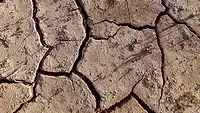Arizona releases extreme heat safety guidelines

Image via Unsplash
With summer approaching, extreme heat is a growing concern in the wake of extreme weather. For security leaders whose organizations have employees who spend significant amounts of time outdoors, ensuring their safety is a top priority.
To mitigate some of the risks of extreme heat, the state of Arizona has released safety recommendations to help keep people cool. Check on those who are at higher risk for heat-related illness, do not have air conditioning and/or spend much of their time alone. Security officers or other personnel who frequently work alone should have a way to communicate with others in the event of an emergency.
Check air-conditioning ducts for proper insulation. Weather-strip doors and window sills to keep cool air in. Cover windows that receive morning or afternoon sun with drapes, shades, awnings or louvers. Listen to local weather forecasts and stay aware of upcoming temperature changes.
Security leaders should train employees, especially those who work outside, on the signs of heat-related illnesses and ways to respond to them:
Heat cramps
- Signs: Muscle pains or spasms in the stomach, arms or legs.
- Actions: Go to a cooler location. Remove excess clothing. Take sips of cool sports drinks with salt and sugar. Get medical help if cramps last more than an hour.
Heat exhaustion
- Signs: Heavy sweating, paleness, muscle cramps, tiredness, weakness, dizziness, headache, nausea or vomiting or fainting.
- Actions: Go to an air-conditioned place and lie down. Loosen or remove clothing. Take a cool bath. Take sips of cool sports drinks with salt and sugar. Get medical help if symptoms get worse or last more than an hour.
Heat stroke
- Signs: Extremely high body temperature (above 103 degrees) taken orally; red, hot and dry skin with no sweat; rapid, strong pulse; dizziness; confusion; or unconsciousness.
- Actions: Call 911 or get the person to a hospital immediately. Cool down with whatever methods are available until medical help arrives.
Additional recommendations include:
- Stay indoors as much as possible and limit exposure to the sun.
- Drink water and avoid drinks with caffeine.
- Spend the warmest part of the day inside when possible.
- Protect face and head by wearing a wide-brimmed hat.
- Avoid strenuous work during the warmest part of the day. Use a buddy system when working in extreme heat and take frequent breaks.
- Avoid extreme temperature changes.
Looking for a reprint of this article?
From high-res PDFs to custom plaques, order your copy today!





